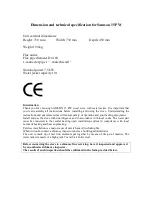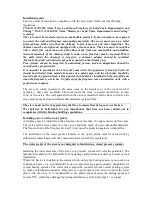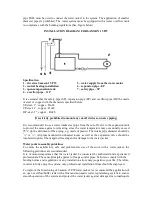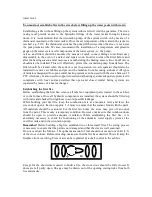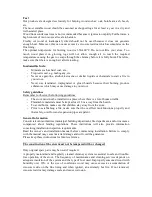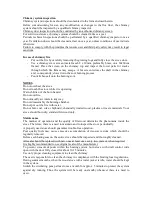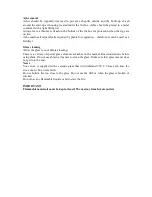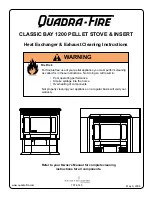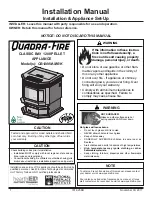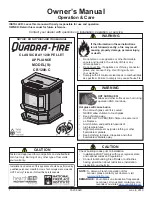
Fuel
Our products are designed exclusively for burning wood such as: oak, hornbeam, ash, beech,
etc.
The most suitable wood should be seasoned as chopped logs for at least a year in a dry and
well-aerated place.
Wood from coniferous trees is not recommended because it ignites too rapidly. Furthermore, a
high content of resin causes all seals to harden.
Freshly cut wood or inadequately dried should not be used because it does not generate
enough heat. Moreover, this can cause excessive creosote residue which accumulates on the
flue lining.
The optimal temperature for burning wood is 350-400°C. Do not overfire your stove. Too
much wood placed on glowing logs will not allow enough air to reach the required
temperature causing the gas to escape through the chimney before it is fully burnt. Therefore,
make sure that there is enough air after reloading.
Inadmissible fuels:
-
Minerals such as hard coal, etc.,
-
Tropical wood, e.g. mahogany, etc.
-
Never use gasoline, alcohol, kerosene or similar liquids or chemicals to start a fire in
your stove.
-
Never use laminated, impregnated or glued boards because their burning produce
substances which may cause damage to your stove.
Safety guidelines
Remember to observe the following guidelines:
-
The stove must not be installed in a place where there is a lot of human traffic.
-
Flammable materials must be kept at least 1.5 m away from the hearth.
-
To avoid burns, make sure that children stay away from the stove.
-
Prior to establishing a fire, make sure that the overflow tank functions properly and
that safety, overflow and expansion pipes are patent.
General Information
Consult relevant authorities (municipal building department, fire department, and/or insurance
companies) about binding regulations. These institutions will also provide information
concerning installation inspection requirements.
Read the owner’s and installation manual before commencing installation. Failure to comply
with the manual may cause material damage and will void the guarantee.
Please keep these instructions for future reference.
The construction of the stove must not be tampered with or changed
Only original spare parts may be used if required.
A properly maintained and regularly cleaned chimney system is essential to safe and trouble-
free operation of the stove. The frequency of maintenance and cleaning services depends on
adequate insulation of the system and the type of fuel used. Improperly seasoned wood with
humidity over 20% or the use of coniferous wood may cause excessive accumulation of
creosote reside on the flue lining and when ignited, an extremely hot fire. If not removed,
creosote residue may damage seals and cause corrosion.


